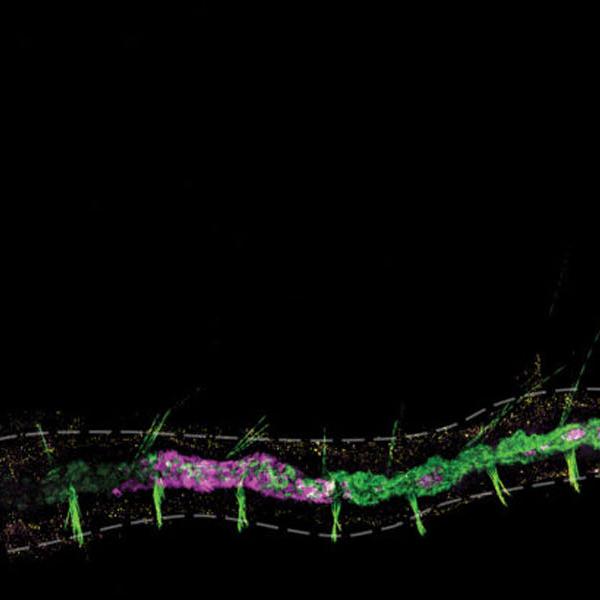The Zhong Lab takes a closer look at the way plants adapt to their environments in natural populations.
The way we study DNA is changing. This idea is at the forefront of current research from postdoc Jie Liu and professor Xuehua Zhong in the department of biology.
Their recent findings were published last month in Nature Communications. In the study, the Zhong Lab took a closer look at the small chemical changes—called DNA methylation—in non-coding RNA genes in plants that other researchers often ignore. Usually, the focus is on the genes that provide instructions for making proteins, but the non-coding genes in this study, ncRNA genes, are a little different, performing other functions in cells—including controlling gene expression.

under fluorescent light, arranged in the Chinese
character for Jie: 杰 (photo cred: Jie Liu)
Researchers in the Zhong Lab observed that DNA methylation on these genes influence how plants adapt to their environment. “We found that DNA methylation changes at these non-coding RNA genes highly correlated with plant phenotypes that are important for plant adaptation,” Liu said. That means they were able to better understand the role of DNA methylation in a plant’s ability to be as successful as possible amid changing conditions.
Liu’s research uses Arabidopsis thaliana, a member of the mustard family with small, white flowers. Liu explained that this plant’s short life cycle, small genome size, and abundance of seeds make it a widely used model plant for this type of research. Liu used a tool called CRISPR-dCas9 to edit the DNA methylation of the plant, altering the contents of one specific ncRNA gene by adding more methyl groups to it. From this small chemical modification, the plant changed the way it behaved—it started flowering earlier.
And so we are beginning to better understand the ways that plants adapt to their surroundings on a genomic level. This could have major implications beyond the small white flowers grown in the greenhouse. “The global population is increasing while agricultural production is threatened by changing climate,” Liu said. But the Zhong Lab’s research may be able to help with that: “The knowledge obtained from Arabidopsis thaliana can usually be used in other plants, such as major crops.” In other words, understanding the effects of DNA methylation could help breed better, sturdier, more productive crops.
The paper published in Nature Communications goes hand-in-hand with another recent publication from the Zhong Lab in Plant Physiology. This review paper covers new methods of detecting DNA methylation, which has typically been an expensive process because of the additional round of genome sequencing often required in methylation research when using multiple different ecotypes (or “in population scale”).
However, Liu explained that new quantification methods can obtain the genetic and epigenetic information from a single round of sequencing. “This can reduce the cost of research,” Liu said. “With these new methods,” he continued, “the community can investigate more and more large-scale data sets.”
These developments are especially relevant to the Zhong Lab, which is interested in what determines the natural variations in DNA methylation. “We hope we can identify some important genes with these new methods,” Liu said.




